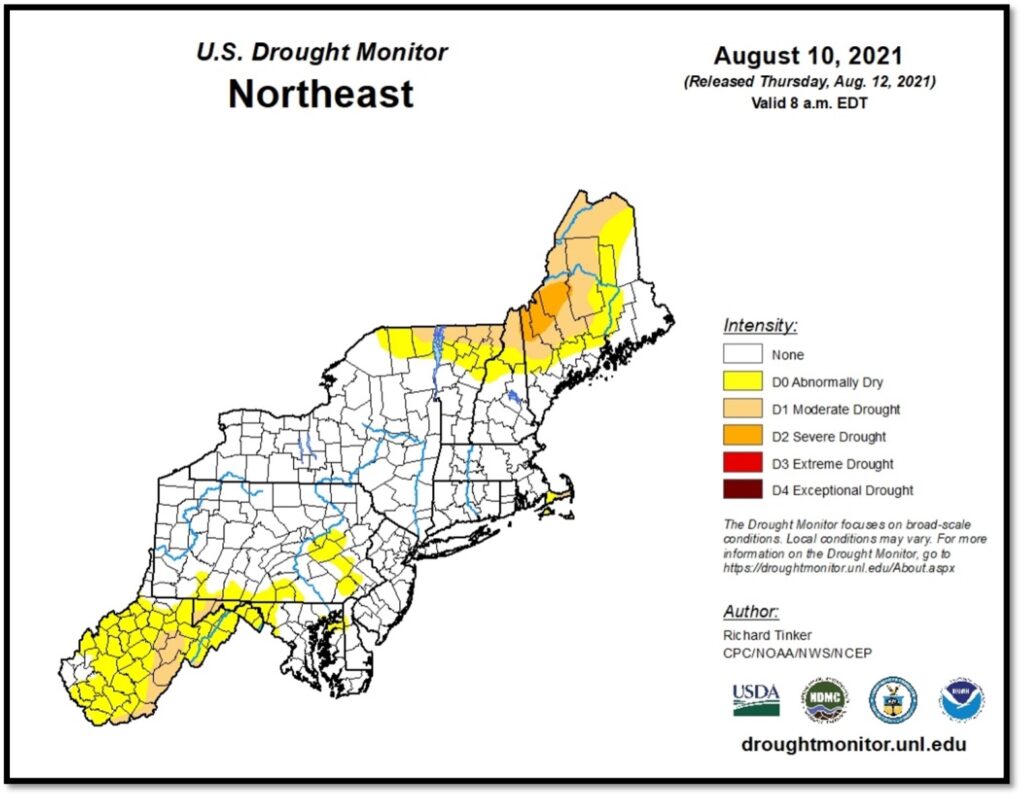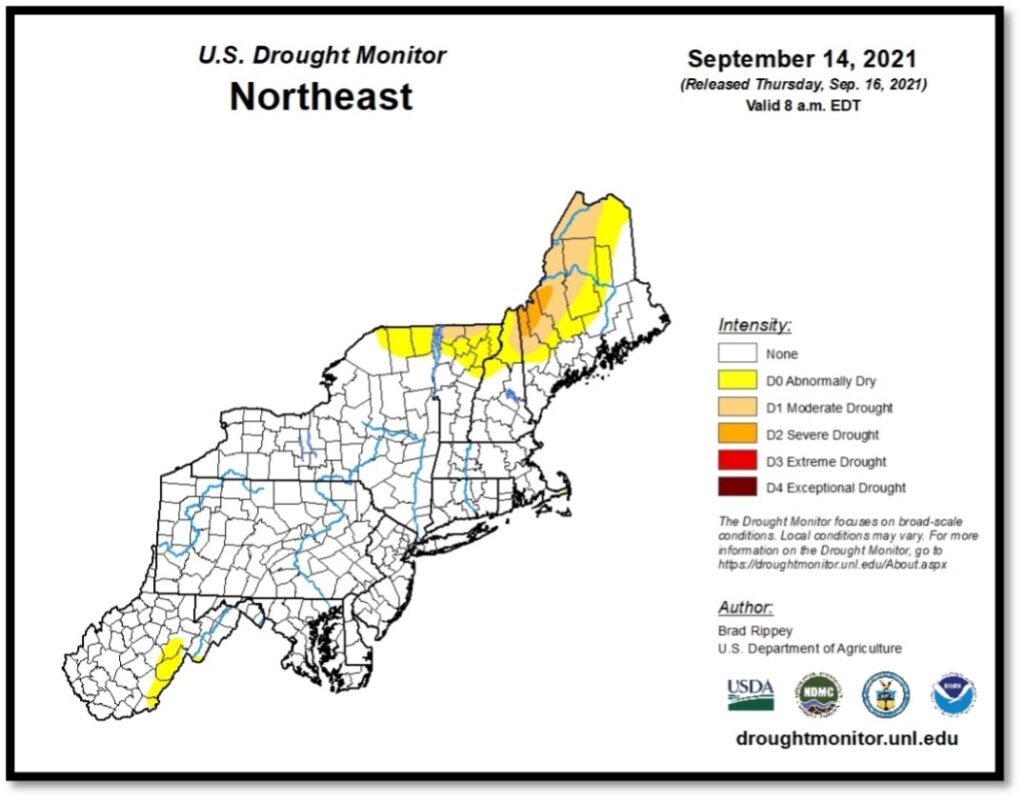Given the recent impacts to our area from Hurricane Ida, it may seem like an odd time to talk about droughts. But as an old television public service announcement once stated, “no one ever thinks there is a drought – until there is one.” In the western United States, the wildfires dominating much of the news are due in large part to the powerful droughts that are impacting multiple states.
One has to wonder if droughts of that scale can happen in the normally humid-continental/humid-tropical climate of the mid-Atlantic U.S. and which steps we can take to proactively manage our water resources.
When did Pennsylvania last suffer a drought?
The climate of the mid-Atlantic region is generally humid and wet. However, this region is not immune to droughts. In fact, portions of Pennsylvania suffered a historically extreme drought between 1995 and 2002. There was also a dry period in the early 1980s and a significant drought in the 1960s during which the salt line on the Delaware River reached its furthest point upstream in November 1964. Even the effects of the 1930s’ “Dust Bowl” were seen in Pennsylvania with decreased precipitation during that decade. Research has found that in the last 400 years, the worst drought (at least in the Delaware River Basin) occurred in the year 1635!
Today’s scientists define droughts by several criteria, including precipitation, stream levels, water storage reservoir levels, and soil moisture, which are regularly monitored. For example, the map below from August 10, 2021 shows several “D0 – abnormally dry” areas in Pennsylvania and drought conditions in parts of western Maine.

Due to the remnants of Hurricane Ida, which passed through Pennsylvania between August 31 and September 2, 2021, this condition no longer existed in Pennsylvania by September 14 as seen in the map below.

How are drought conditions monitored?
At the state level, the Pennsylvania Department of Environmental Protection (PADEP) makes drought watch, warning, or emergency declaration recommendations based on four numeric indicators:
- Stream flow
- Groundwater level
- Precipitation
- Soil moisture
PADEP gets stream flow and groundwater level data from a statewide network of gauges maintained by the U.S. Geological Survey and factors in information it receives from public water suppliers. Drought status recommendations are made after assessing departures from normal ranges for all indicators for periods of three to 12 months.
What are the differences between drought watch, warning, and emergency declarations?
Drought watch
Generally, when three or more of the indicators signal a drought-watch condition for a county or group of counties,
- PADEP notifies the Pennsylvania Emergency Management Agency (PEMA).
- The Secretary of PADEP may issue a drought watch on behalf of the Governor.
- PADEP increases its monitoring activities from monthly to weekly.
- Monitoring of public water suppliers begins.
- The public is requested to voluntarily reduce water usage by five to 10 percent.
Drought warning
When the indicators signal a warning condition,
- A similar process is followed, leading to a drought warning announcement.
- Citizens are asked to voluntarily reduce water use by 10 to 15 percent.
Drought emergency
When an emergency is indicated,
- PEMA convenes the Emergency Management Council.
- In addition to non-essential water use restrictions for the general public, the state may impose water rationing in cases severe enough to threaten health and safety.
Managing the water
Managing the commonwealth’s water resources during droughts is the responsibility of the Pennsylvania Emergency Management Agency (PEMA), with direct support from PADEP. For other states, each is unique in how it manages its water resources.
Throughout much of Pennsylvania, two of the most important agencies that regulate water usage are the Delaware River Basin Commission (DRBC) and the Susquehanna River Basin Commission (SRBC). Each of these agencies have permitting and approval processes for projects wishing to withdraw water above a certain threshold (typically somewhere in the range of 10,000 to 100,000 gallons per day). If the project involves supplying drinking water to the public, then PADEP’s Bureau of Safe Drinking Water requires a permit.
Next steps
If you have questions or concerns about water management or other water-related issues, BAI Group can help. For over 30 years, our geologists and engineers has assisted private industry and government agencies with water quality and supply issues. Contact us today to learn more about our services.